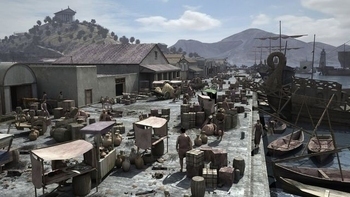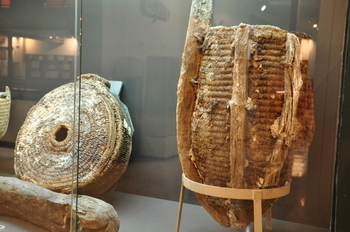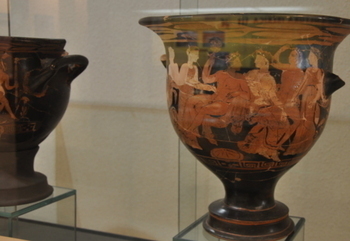

Guidelines for submitting articles to La Torre Golf Resort Today
Hello, and thank you for choosing La Torre Today.com to publicise your organisation’s info or event.
La Torre Golf Resort Today is a website set up by Murcia Today specifically for residents of the urbanisation in Southwest Murcia, providing news and information on what’s happening in the local area, which is the largest English-speaking expat area in the Region of Murcia.
When submitting text to be included on La Torre Golf Resort Today, please abide by the following guidelines so we can upload your article as swiftly as possible:
Send an email to editor@spaintodayonline.com or contact@murciatoday.com
Attach the information in a Word Document or Google Doc
Include all relevant points, including:
Who is the organisation running the event?
Where is it happening?
When?
How much does it cost?
Is it necessary to book beforehand, or can people just show up on the day?
…but try not to exceed 300 words
Also attach a photo to illustrate your article, no more than 100kb

A history of Cartagena, part 2: from the Iberians to the Romans
The identity of Cartagena was forged by successive dominant cultures
Cartagena may have been home to many pre-historic races and civilizations (see the first part of the local history), but it was in the first millennium BC that the first of the cultures which truly shaped the identity of the city and its population arrived in the south-east of Spain.
Between the 7th century BC and the 5th century AD Cartagena was one of the most important centres of population, first (according to some theories) in Tartessos and then, successively, for the Iberians, the Carthaginians and the Romans. At the end of this 1200-year period the city was one of the largest and most important in Spain.
This is a fact of which the “cartageneros” are immensely proud, while also being fond of pointing out that there is no evidence to suggest that the city of Murcia even existed before the arrival of the Moors in Spain 200 years after the end of Roman domination!
For those visiting from outside the Region of Murcia, though, what it means is that the city centre of Cartagena is steeped in ancient history, some of it visible (such as the Roman theatre) but much of it still buried under subsequent developments over the last 1,500 years (this is the case, for example, of the Roman amphitheatre, most of which lies under the bull ring, and the palace of Hasdrubal – Hannibal’s brother - which is believed to have been located on the Molinete hill).
Work is undergoing to recover more of the past of Cartagena, although the city has so much history it sometimes appears difficult to know where to start!
Cartagena and Tartessos
In the 7th century BC the south of Spain was occupied by indigenous tribes and was part of what is referred to in historical sources as Tartessos, a large confederate state which was centred in the south-west but which some believe extended as far east as the River Thader (now known as the Segura). Within this area were two main cities, where power and wealth were concentrated.
The capital of Tartessia Citerior was Mastia, which many believe to have been Cartagena, and although no conclusive archaeological evidence has been found the topography of Mastia described by the Greeks is similar to the five hills of Cartagena. This is still an area of controversy among ancient historians, with others suggesting that the descriptions offered could equally apply to Mazarrón, not far to the west of Cartagena, or Citeia in the bay of Algeciras (province of Cádiz).
The city of Mastia was home to representatives of various tribes trying to expand their influence in the Iberia Peneinsula, and there were trading relations with Celts, Carthaginians (the name given to those from the Phoenician city of Carthage in north Africa), Greeks and Romans. Exports included esparto grass, garum fish sauce, salted food, raw minerals, pelts and silver.
This era was the first in the western Mediterranean to produce an age of cultural and commercial splendour, during which Cartagena (if indeed it was Mastia) would have been walled for the first time. It would have been used by merchant ships from the east as a trading port, where the safe natural harbour offered a convenient stop-off point on the trade routes around the Mediterranean basin, and was also a natural collection point for goods produced inland, which funneled down into the trading port.
Amongst the most important trading partners were the Phoenicians, who were the first to bring the potter’s wheel to Spain and left behind sunken vessels in the waters of the region, including two of which the wrecks have been discovered just off the beach in Mazarrón.
Iberian settlements in Cartagena
The culture and civilization of the Iberians broadly covers a period between the 8th and 1st centuries BC, and traces of it are widespread in the Region of Murcia and the rest of southern and eastern Spain.
In Cartagena, the remains of Iberian settlements can be seen at the archaeological sites of Los Nietos and Cala Reona, and both reflect the commercial nature of the people living on the Cartagena coast during these centuries, when trading became commonplace throughout the Mediterranean basin. The ports served as trading outlets, of course, but much of the produce exported came from inland, and other important Iberian sites can be found in Mula, Cehegín, Caravaca de la Cruz and Jumilla.
The settlement at Los Nietos on the coast of the Mar Menor includes the inhabited area of the town and the necropolis (burial ground), both dating from the 4th century BC and occupying an area of some 20,000 square metres. It seems probable that it owed its existence to the seams of lead and silver in the mountains of Sierra Minera, which, together with the riches of the Mar Menor, guaranteed the prosperity of the settlement.
Although nowadays the site looks like nothing more than a rock-strewn field, it was once a busy and bustling community and would have been the scene for substantial trading activity, especially in the first half of the 4th century BC. The municipal archaeological museum in Cartagena displays a number of finds from the site, amongst which are important Greek vases, items which would have been expensive luxury goods at the time. These provide evidence not only of trading with Greek merchants, but also of the status of some of the individuals living in Los Nietos 2,400 years ago.
But the fortunes of the settlement declined steadily until it disappeared at the start of the 3rd century BC as a result of the cessation of mining activity and the probable development of the settlement at what is now Cartagena before the arrival of the Carthaginians.
Hasdrubal and the Carthaginians found Qart-Hadast
The Carthaginians were colonists from Phoenicia in the far east of the Mediterranean, on the coastline of what is now Lebanon, Syria and Israel, who established themselves in the city of Carthage on the African coast.
They traded all over the Mediterranean and eventually established a city in Gades (Cádiz) in the year 550 BC, where they stayed until expelled by the Romans in 206 BC. However, how they came to be in what is now called Cartagena (a name which involved from the Latin Cartago Nova, new Carthage) is a long and complicated story.
Around 1200 BC a great shift in the balance of power unsettled the ancient world and populations migrated, and it was at this point that some of the Phoenicians travelled first to Egypt and then throughout the Mediterranean. This was when Carthage (in modern Tunisia) was founded, and from here trade was controlled across the French, African and Spanish coasts, where other Phoenicians settled. This was how the Carthaginians were invited to Cádiz as they rose to become a powerful trading nation in their own right.
But eventually this power led to conflict with Rome, and as a result the Punic Wars were fought between the Carthaginians and the Romans in the 3rd and 2nd centuries BC. After the first Punic War (264-241 BC) Rome annexed Sicily and took control of Corsica and Sardinia, and some of the Carthaginians retreated towards the Iberian Peninsula, where they tried to win back some of their lost prestige and increase their economic resources by expanding their influence and control in the south of the peninsula.
This area was under the control of the Barca clan, and it was a member of this clan, the Carthaginian general Hasdrubal Barca, son-in-law of Hamilcar and brother-in-law of Hannibal, who "founded" the city of Cartagena in 227 BC giving it the name of Qart-Hadast. This means "new city", which is what Hasdrubal wished to create; a city which would become the Punic (Carthaginian) capital on the Peninsula, and a new trading centre for the Carthaginians in the west. Hasdrubal used the natural landscape in his defence plans for the city, and created his citadel on the Monte de la Concepción.
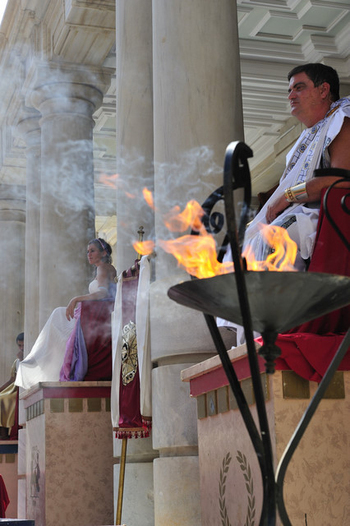 This is the first point at which we can be certain from documented evidence that the city of Cartagena existed, but of course it is improbable that Hasdrubal built Qart-Hadast from scratch. Far more likely he installed his troops and followers there and reinforced the defences of a settlement which was already blessed with the natural protection of its harbour to the south, the lagoon and marshland to the north and the five hills which provided strongholds on the isthmus.
This is the first point at which we can be certain from documented evidence that the city of Cartagena existed, but of course it is improbable that Hasdrubal built Qart-Hadast from scratch. Far more likely he installed his troops and followers there and reinforced the defences of a settlement which was already blessed with the natural protection of its harbour to the south, the lagoon and marshland to the north and the five hills which provided strongholds on the isthmus.
In effect, then, the Carthaginians almost certainly took over the trading city which already existed under the Mastians and Iberians, although the local tribe were very probably unwilling to hand over their home and trading rights without a struggle.
After Hasdrubal’s death at the hands of a Celtic slave in 221 BC, Hannibal became the commander-in-chief of all Carthaginian forces in Hispania. He created a powerful army, encouraged the mining activity of the Sierra Minera in Cartagena and built a chain of watchtowers right along the coast to alert the citadel to any foreign ships.
This gave rise to the "Hannibal watchtowers" system which was used until the 18th century (with more modern structures replacing the originals), and thus in just a few years Cartagena became a worryingly powerful city for the rest of Hispania and even a threat to the dominance of Rome itself.
The Roman invasion of Hispania and the conquest of Cartagena
After the first Punic War Rome and Carthage had signed a treaty by which Carthaginian influence was not to extend beyond the River Ebro. However, when Hannibal attacked Sagunto (just to the south of the Ebro, not far north of the modern city of Valencia) this sparked a second conflict which soon escalated into the second Punic War (218-202 BC).
Eventually Hannibal decided to confront the Romans on their own territory, and set off on the military expedition across the Alps, complete with elephants, which has cemented his name into history and legend. But in 209 BC, while he was away, the Roman Commander Publius Cornelius Scipio made a surprise attack on Cartagena, conquered the city and ousted the Carthaginians after just 18 years.
All of these events relating to the founding of Qart-Hadast, Hannibal’s attack on Sagunto and the fall of Cartagena to the Romans are celebrated in the colourful Romans and Carthaginians fiestas, which are held in Cartagena every September.
Carthago Nova under the Romans

Following the Roman conquest of Cartagena, all territories which had belonged to the Carthaginians passed to Roman rule, and subsequent defeats in battle and the loss of Cádiz spelt the end for the Carthaginians in the Iberian Peninsula.
For the Romans, the city was like a daughter of Carthage - hence the name Carthago Nova - although at the same time it was known by various other names reflecting the natural resources of the area, such as Carthago Spartaria (esparto grass), Carthago Skombraria (salted fish) and Carthago Argentaria (silver). Cartagena came into the province of Hispania Citerior and became one of the most important ports in the area due largely to the mineral wealth of Sierra Minera, where the silver helped to fund the Roman armies (further information can be found in the history of the municipality of La Unión).
This also led to the settlement of the Sierra Minera area, especially at El Castilet (Cabo de Palos), Mina Balsa, Los Ruices, and Villa de Paturro (Portmán), and to considerable growth in Carthago Nova itself, with the port as the foundation stone for all that followed.
The Roman colony of Urbs Iulia Nova Cartago
During the reign of Julius Caesar the city changed its status, becoming a colony in 44BC, probably as recompense for the help given by Carthago Nova to Caesar 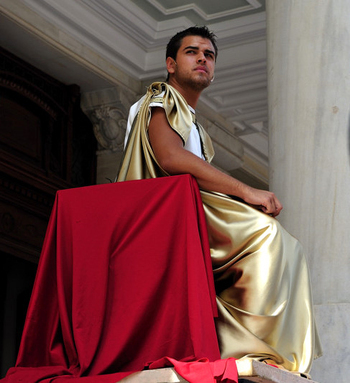 during his confrontation with Pompey in the republican civil wars of the first century BC.
during his confrontation with Pompey in the republican civil wars of the first century BC.
This brought about a period of intense urban renovation which ended in the reign of Augustus with the construction of the theatre and the erecting of monuments in the forum. Cartagena was clearly a very important city, because the word "Urbs" was a term used only for Cartagena and Tarraco (Tarragona), which were rivals for the title of most important city in Hispania Citerior. At this time the network of streets was re-designed, with a series of quadrangular spaces which housed public and private buildings. The forum, the administrative, commercial and religious centre, occupied the centre of the city, where the modern-day Plaza de San Francisco is now, and the Molinete hill which is now an archaeological park.
Cartagena in the Great Roman Empire

During the reign of Augustus the Republic of Rome gave way to the Empire, and this coincided in Cartagena with an expansion of public buildings and a far greater dynamism in the life of the city, as the Emperor saw grandiose buildings as a way of spreading his splendour throughout his dominions. A perfect example of this is the Augusteum, which has been excavated beneath the streets and which can be visited today (note: above is a computer-generated image of how it would have appeared, not what you see today!)
At the end of the first century AD the area between the Molinete hill and the Monte de la Concepción, which had remained uninhabited since Punic times, underwent a renovation and monumentalization promoted by Augustus. One of the most important elements reflecting the political and cultural atmosphere of the time was the theatre, on the western slopes of the Monte de la Concepción, where a perfectly executed architectural design plan can still be seen.
At present this is the archaeological jewel in the crown of Cartagena, and a visit to the Roman Theatre Museum is the most popular tourism attraction in the city today (indeed, this is the most visited museum in the Region of Murcia). However, such is the wealth of remains in the city that some believe that the amphitheatre, of which only a part has been uncovered, could yet prove to be one of the most important of its kind in the Roman world.
By the 2nd century, though, Cartagena had entered a phase of progressive urban decline. The population was now concentrated in the western part of the city, leaving the eastern side practically empty, the mining industry suffered a crisis, and the military installations were largely abandoned in the face of the threat from African raiders who terrorized the population.
In the end decadence followed, the important buildings of the Great Empire were abandoned, and despite Carthago Nova becoming the capital of its own province at the end of the 4th century Rome now appeared a spent force. The Emperor Theodosius introduced Christianity, but after he died in 395 the city of Carthogo Nova was left defenceless, along with the western Roman Empire, against the attacks of Barbarians and Visigoths, and the Empire in the west fell in 476.
The story continues…
History of Cartagena part 3, from the 5th to the 15th century
History of Cartagena part 4, From Catholic Monarchs to the present day

